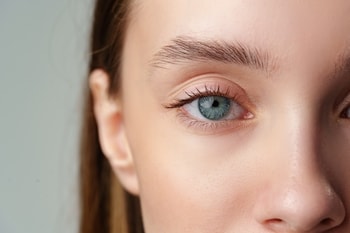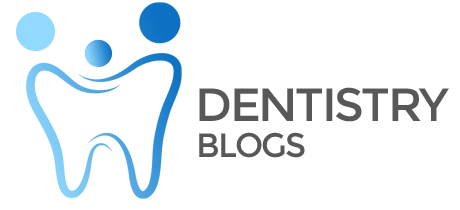Rhinoplasty procedure, commonly called a “nose job,” is one of the most popular cosmetic surgeries worldwide. Depending on the individual’s needs, it involves reshaping the nose to improve its appearance or function. This surgical procedure can be done for cosmetic reasons, to fix breathing problems caused by a deviated septum, or to correct a congenital disability. No matter the reason, rhinoplasty surgery is a life-changing decision that should be carefully considered.
Whether you’re looking to improve the aesthetic appearance of your nose, reduce breathing problems, or enhance facial balance, understanding the rhinoplasty procedure is essential. This article’ll explore everything you need to know about rhinoplasty surgery, including the different types, the process, potential risks, and much more.
What is Rhinoplasty?
Rhinoplasty is a surgical procedure that reshapes the nose. The goal of rhinoplasty can be either cosmetic or functional, or a combination of both. The procedure involves modifying the bone and cartilage structure of the nose to achieve the desired shape and size. It can also correct issues such as a deviated septum, which causes breathing difficulties.
A common misconception is that rhinoplasty surgery only involves changing the shape of the nose for cosmetic reasons. However, many people undergo this procedure to improve nasal function and alleviate breathing problems caused by a deviated septum or other issues with the nasal septum. This functional aspect of rhinoplasty is known as functional rhinoplasty.
Types of Rhinoplasty: Open vs. Closed
There are two main types of rhinoplasty procedures: open and closed. The choice depends on the complexity of the surgery and the desired outcomes.
Open Rhinoplasty
Open rhinoplasty is a nose-reshaping surgery in which the surgeon makes an incision across the columella, the strip of tissue between the nostrils. This allows for more direct access to the nasal bones and cartilage, making it easier to make significant changes. Open rhinoplasty is typically used for more complex cases, such as when someone must correct a deviated septum or has more extensive reshaping needs.
Closed Rhinoplasty
On the other hand, closed rhinoplasty involves incisions inside the nostrils, which leaves no visible scarring. This procedure is generally used for less extensive nose reshaping procedures and when the changes required are relatively minor. Since there are no external incisions, recovery time can be quicker with closed rhinoplasty compared to open rhinoplasty. However, the access to the nasal structures is more limited, so the surgeon may be unable to make as many adjustments.
Why Do People Choose Rhinoplasty?
 There are various reasons why people choose to undergo a rhinoplasty procedure. Some people seek nose reshaping for cosmetic reasons, while others may do it for functional reasons or a combination of both. Here are some of the most common motivations for getting a nose job:
There are various reasons why people choose to undergo a rhinoplasty procedure. Some people seek nose reshaping for cosmetic reasons, while others may do it for functional reasons or a combination of both. Here are some of the most common motivations for getting a nose job:
1. Cosmetic Reasons
Many individuals choose rhinoplasty surgery to enhance their appearance. A person’s nose shape can significantly impact their overall facial balance. Those who feel self-conscious about the size or shape of their nose may seek cosmetic rhinoplasty to create a nose that complements their other facial features. Some may want a smaller nose, a more defined nasal tip, or a more symmetrical nose shape.
2. Breathing Problems
Breathing problems, often caused by a deviated septum, are another common reason for undergoing rhinoplasty surgery. A deviated septum occurs when the nasal septum, the structure that divides the nostrils, is misaligned. This can lead to nasal function issues like difficulty breathing through one or both nostrils. In these cases, a functional rhinoplasty may be performed to correct these issues and improve breathing.
3. Birth Defects or Injury
Rhinoplasty can also address congenital disabilities or injuries that have affected the nose. For example, a broken nose can cause long-term structural damage, leading to both cosmetic and functional concerns. In such cases, rhinoplasty can help restore the nose’s appearance and functionality.
The Rhinoplasty Procedure: Step-by-Step
The rhinoplasty procedure can vary depending on the type of surgery and the individual’s needs. However, most rhinoplasty surgeries follow a similar process. Consider what you can expect before, during, and after the surgery.
Before the Surgery
Before undergoing rhinoplasty, you’ll have a consultation with a cosmetic or plastic surgeon. During this consultation, you will discuss your goals for the surgery, including the desired shape of your nose and any functional issues you’d like to address, such as breathing difficulties.
Your surgeon will also review your medical history, including prior surgeries, allergies, and current health conditions. If you have any pre-existing issues, such as a deviated septum or nasal function problems, these will be addressed as part of the plan for your rhinoplasty.
In addition, you will undergo a physical exam, and your surgeon may photograph your nose from different angles. These images will be used as a reference throughout the surgery and to help create a customized surgical plan.
Anesthesia Options
Rhinoplasty is typically performed under general anesthesia or intravenous sedation, depending on the complexity of the surgery and the patient’s preferences. General anesthesia ensures that you are completely unconscious during the procedure, while intravenous sedation allows you to stay relaxed and comfortable but remain awake throughout the surgery.
Sometimes, a surgeon may use local anesthesia in combination with sedation for a more minor procedure. Local anesthesia numbs the area of the nose and surrounding tissues to minimize discomfort.
The Surgery Itself
Once the anesthesia has taken effect, the surgeon will make the necessary incisions. For closed rhinoplasty, the incisions will be hidden inside the nostrils. For open rhinoplasty, a small incision is made at the base of the nose, between the nostrils.
The surgeon then carefully adjusts the nose’s bone and cartilage to achieve the desired results. This may involve removing or reshaping parts of the nasal bones or cartilage to create a smoother profile, reduce the nose’s size, or change the shape of the nasal tip.
If your deviated septum is causing breathing problems, your surgeon may also straighten the nasal septum during the procedure to improve airflow and function.
Closing the Incisions
After the necessary changes have been made, the incisions are carefully closed with sutures. If external incisions are made, your surgeon will place bandages or splints on your nose to support the new structure while it heals.
After the Surgery
Following the rhinoplasty procedure, you will be monitored in a recovery room as the anesthesia wears off. Most rhinoplasty surgeries are outpatient, meaning you can go home the same day. However, you will need someone to drive you home, as the effects of the anesthesia may last for a few hours after the procedure.
Rhinoplasty Recovery: What to Expect
Recovering from a rhinoplasty procedure is a crucial part of the process, as it allows the body to heal and the surgical procedure results to become visible. While the procedure may take a few hours, the recovery can last weeks, and complete healing can take up to a year. Having realistic expectations is important, as the final results, including facial balance improvements, will evolve gradually. Here’s a more detailed look at what you can expect during your rhinoplasty recovery.
1. The First Few Days After Surgery
 In the immediate aftermath of the rhinoplasty procedure, you will experience discomfort, swelling, and bruising. This is common for most surgical procedures, especially those involving delicate areas like the nose. Swelling is particularly noticeable around the upper lip and eyes, and you may find it difficult to breathe through your nose due to internal swelling. However, rest assured that these symptoms are temporary.
In the immediate aftermath of the rhinoplasty procedure, you will experience discomfort, swelling, and bruising. This is common for most surgical procedures, especially those involving delicate areas like the nose. Swelling is particularly noticeable around the upper lip and eyes, and you may find it difficult to breathe through your nose due to internal swelling. However, rest assured that these symptoms are temporary.
You will likely be given a prescription for pain management to keep you comfortable during this period. Many patients also applythey are concerned there’s any concern about volume loss in the face during recovery. These fillers can enhance facial balance and ensure that your face looks even and natural as the swelling from the rhinoplasty surgery decreases.
2. Initial Recovery Phase (Week 1 to Week 2)
The first two weeks are the most intensive in terms of recovery. You may need to take time off from work or school to rest during this time. Here’s what you can expect during the early stages of your recovery:
- Splints and Bandages: After the rhinoplasty procedure, a splint will likely be placed inside your nose to stabilize the nasal structures. There may also be an external bandage or cast around the nose, which helps maintain its shape during the healing process. These are typically removed after 7-10 days, but the exact timing may vary depending on your surgeon’s advice.
- Swelling and Bruising: Swelling around the upper lip and the eyes is common. While most swelling will begin to subside within a few days, significant swelling can persist for a few weeks. Bruising around the eyes is also typical and can take 1-2 weeks to fade.
- Avoiding Activity: During this period, you should avoid strenuous activity to prevent strain on your nose. This includes exercises, sports, or any activity that might increase your heart rate or cause you to bump your nose accidentally.
- Rhinoplasty Risks: Although rhinoplasty is generally safe, risks can occur during the recovery period. These may include infection, excessive swelling, or breathing difficulties. Following your surgeon’s aftercare instructions is essential to minimize these risks.
3. Returning to Normal Activities (Week 3 to Week 6)
By the third week after surgery, you’ll likely feel more comfortable and may return to light work or activities. While most of the swelling will have gone down by now, you should still avoid activities that could pressure your nose.
You might notice that your new nose is beginning to take shape, though the final contours are still not entirely visible. This is because it takes time for the bone and cartilage in your nose to heal and settle into place fully. This period is critical to allow your nose to adjust to its new form.
- Healing Process Continues: Swelling, especially at the nasal tip, may still be noticeable, but it’s typically not as severe as it was in the first two weeks. However, some swelling can persist for several months, especially in more complex rhinoplasty procedures, such as secondary rhinoplasty, a follow-up procedure done to correct or refine previous rhinoplasty results.
- Nasal Function: If you underwent rhinoplasty to improve breathing problems caused by a deviated septum or other nasal issues, you may notice an immediate improvement in your breathing ability. However, complete improvement in nasal function may take time as the internal swelling gradually decreases.
4. Long-Term Healing (Up to a Year)
Full recovery from a rhinoplasty procedure can take up to a year, especially if you have had a significant surgical procedure. Although most of the swelling will subside within the first couple of months, subtle changes will still occur as the tissues heal. This can include:
- Final Shape Settling: It’s common for the final shape of your nose to evolve slowly. The nasal bones and cartilage remain in their final positions during the first 6-12 months. The nose will become more refined as swelling continues to subside.
- Final Results: The full, final results of your rhinoplasty, including the desired shape and any improvements in breathing or nasal function, will be noticeable around the one-year mark. The nose may appear to change slightly as it continues to heal and take on its permanent form.
- Follow-Up Appointments: Regular follow-up appointments with your surgeon will be essential during the long recovery period. Your surgeon will monitor your healing progress and address concerns, ensuring the final results match your expectations.
5. Understanding the Costs and Considerations
The cost of rhinoplasty can vary greatly depending on various factors, including the procedure’s complexity, the cosmetic surgeon’s experience, and whether you are undergoing surgery for cosmetic or functional reasons. Rhinoplasty cost is an important consideration, and you should be prepared for the financial investment required. Suppose you get rhinoplasty to fix a deviated septum or other functional issues. Your insurance might cover some or all of the costs, but you should check with your provider beforehand.
If your rhinoplasty is primarily cosmetic, cosmetic surgery costs can vary widely. It’s crucial to discuss pricing with your surgeon and factor in the cost of any post-surgery treatments, such as dermal fillers or any potential secondary rhinoplasty that might be needed for refinement.
Potential Risks and Complications
 Like any surgical procedure, rhinoplasty does come with potential risks. Some of the most common rhinoplasty risks include:
Like any surgical procedure, rhinoplasty does come with potential risks. Some of the most common rhinoplasty risks include:
- Infection
- Bleeding
- Scarring (though incisions are usually well-hidden)
- Difficulty breathing
- Secondary rhinoplasty may be necessary if the initial procedure does not yield the desired results.
To minimize these risks, it’s essential to choose an experienced surgeon. A well-trained cosmetic or plastic surgeon will ensure that you’re in good hands and that the procedure is performed with the utmost care.
Conclusion
The rhinoplasty procedure allows individuals to improve their noses’ appearance and functionality. Whether you want to enhance your facial balance or correct a deviated septum, rhinoplasty can help you achieve your desired results. With the right surgeon and proper planning, rhinoplasty surgery can transform your nose and self-confidence. Always consult with an experienced cosmetic surgeon to discuss your goals and ensure you’re fully informed about the procedure’s risks, benefits, and expected outcomes.
References
https://www.mayoclinic.org/tests-procedures/rhinoplasty/about/pac-20384532
https://my.clevelandclinic.org/health/treatments/11011-rhinoplasty
https://www.plasticsurgery.org/cosmetic-procedures/rhinoplasty/procedure





